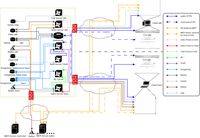Here's a short recap about my speaking engagements in June
AMOOCON

AMOOCON takes place from 4th to 6th June in Rostock, Germany. The conference has it's roots in the FOSS VoIP communities but has a more broad focus these days. I will hold a "full length" PostgreSQL advocacy talk as well as a 20 minute PostgreSQL 9.0 primer.
Netways OSDC

It's my second time at the OSDC, again in Nuremberg, Germany on 23rd & 24th of June. I'll hold a talk and give a short presentation on the native replication mechanisms PostgreSQL is going to provide with the upcoming 9.0 release.
As every year, there might be talks & presentations on these topics at the Metalab shortly before or after the two events; follow me on twitter or watch the event list for updates if you're interested in these.

Recent Comments